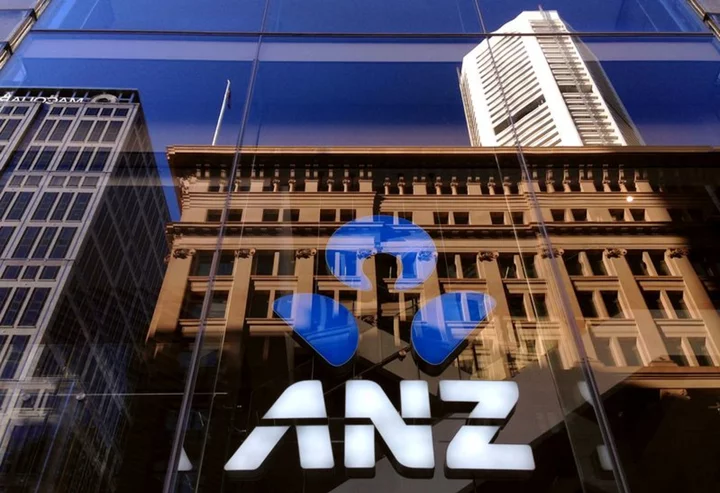(Corrects year in 6th paragraph to 2023, not 2024)
SYDNEY (Reuters) -Australian No. 4 home lender ANZ Group said it supports a regulator-recommended mortgage buffer because of uncertainty around interest rates, breaking from larger rivals that have started exempting some borrowers after a year of rate hikes.
Under an Australian Prudential Regulation Authority (APRA) guideline, the country's main lenders must test whether a borrower could make repayments if interest rates were 3% higher before selling them a loan.
But the country's central bank has raised rates 4% since May 2022 to slow inflation, leaving thousands of home owners unable to refinance their loans under the guideline. ANZ's three larger rivals have started considering lending without applying the 3% buffer, saying it is disadvantaging some borrowers.
"Of course we should build in buffers," ANZ CEO Shayne Elliott told parliament in a regular hearing the country's main bank bosses are required to attend.
"I think 3% feels about right. We don't know what the future holds," he added.
Few people predicted the size and speed of rate hikes so far in 2022 and 2023, and "economists think there might be another 50 basis points or more", he said.
"It's completely unknown. We're very comfortable with the 3%."
Elliott said that while ANZ had noticed a slowdown in discretionary spending - including for health club memberships, streaming services and dining out - its call centres had recorded only a modest increase in borrowers struggling to make repayments.
Just A$6 of every A$1,000 ($670) owed to ANZ for a mortgage repayment was more than 90 days late, which was "better than it was before the pandemic", Elliott said.
"Good incomes mean that people absorb bigger expenses," he added. Also, household savings remained higher than before COVID-19 and lending standards had improved.
"That buffer has played a role," ANZ Chief Risk Officer Kevin Corbally told the hearing.
($1 = 1.4939 Australian dollars)
(Reporting by Byron Kaye; Editing by Stephen Coates)









